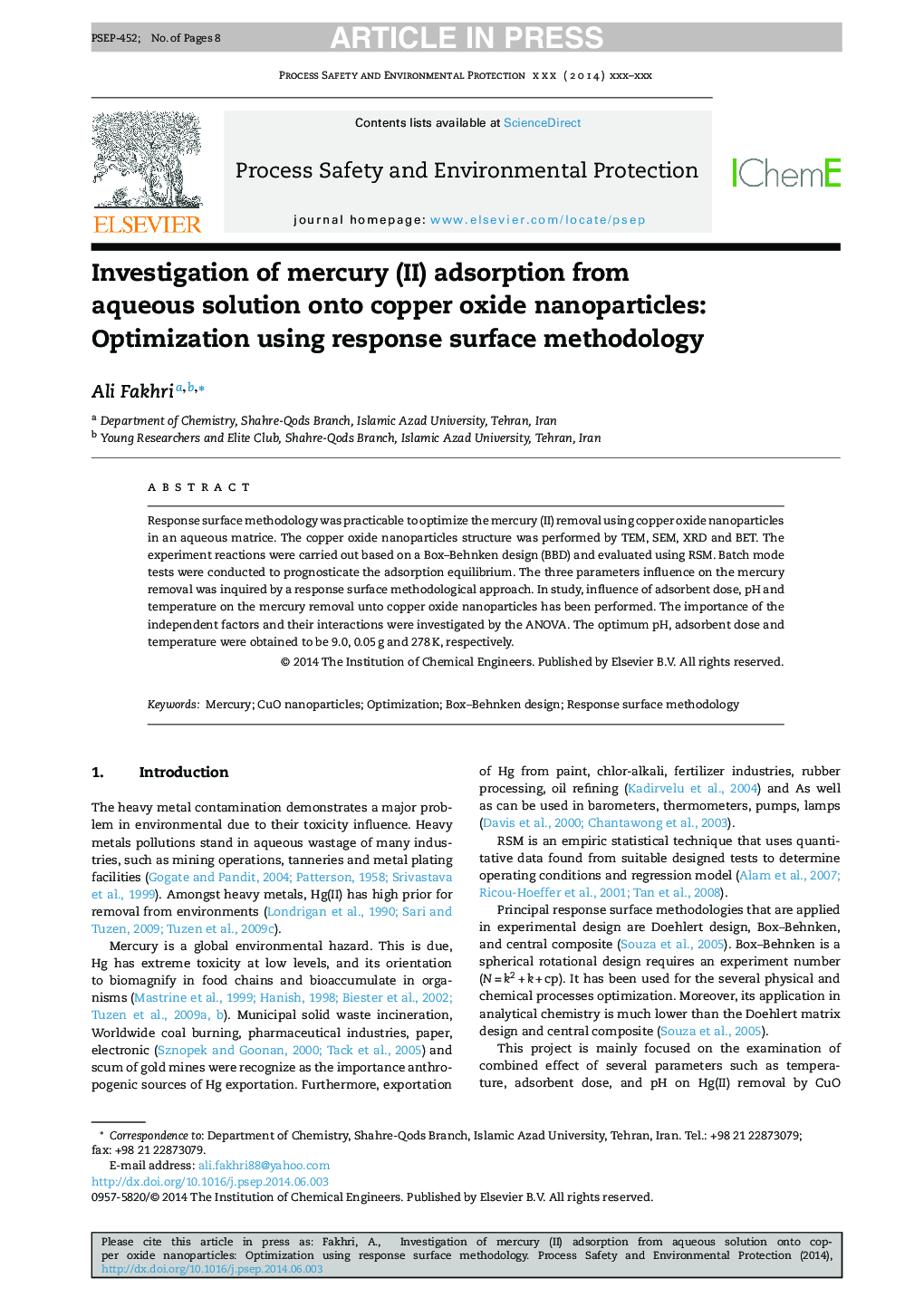| Article ID | Journal | Published Year | Pages | File Type |
|---|---|---|---|---|
| 6974573 | Process Safety and Environmental Protection | 2015 | 8 Pages |
Abstract
Response surface methodology was practicable to optimize the mercury (II) removal using copper oxide nanoparticles in an aqueous matrice. The copper oxide nanoparticles structure was performed by TEM, SEM, XRD and BET. The experiment reactions were carried out based on a Box-Behnken design (BBD) and evaluated using RSM. Batch mode tests were conducted to prognosticate the adsorption equilibrium. The three parameters influence on the mercury removal was inquired by a response surface methodological approach. In study, influence of adsorbent dose, pH and temperature on the mercury removal unto copper oxide nanoparticles has been performed. The importance of the independent factors and their interactions were investigated by the ANOVA. The optimum pH, adsorbent dose and temperature were obtained to be 9.0, 0.05Â g and 278Â K, respectively.
Related Topics
Physical Sciences and Engineering
Chemical Engineering
Chemical Health and Safety
Authors
Ali Fakhri,
